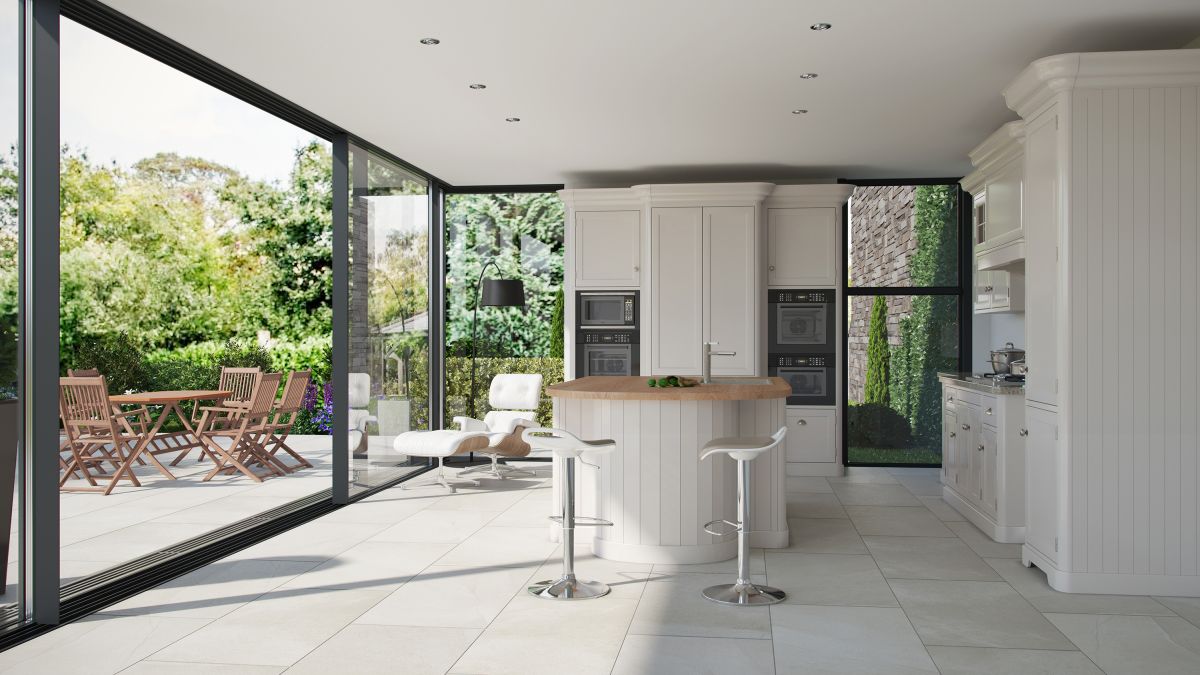
Typically, homeowners think about their property in terms of the interior and the exterior. There’s the house that you live in and the yard that you take care of. But considering that the actual house usually only takes up a small portion of the overall property, it’s a waste to only utilize the air-conditioned square footage. There’s something to be said for merging the indoor and outdoor spaces to maximize your property.
Table of Contents
5 Tips for Merging Indoors With Outdoors
Merging spaces doesn’t mean removing a wall and literally turning your home into a treehouse. Instead, we’re talking about simple design tricks and home improvement projects you can do to make these spaces effortlessly feed into one another.
Want to know more? Here are several useful tips:
i. Create a Wall of Windows
Traditionally, homes have one or two windows along an exterior wall. The windows are framed in the middle of the wall with drywall padding around all sides. But new advances in building processes, materials, and window technology now make it possible to create entire walls of windows with nothing more than small framing around the outside edges. You can find some good examples here.
The beauty of “window walls” is that they almost create an illusion of being outside. They let in a ton of natural light and allow for totally wide open sightlines between the interior and exterior of the home. This is an especially popular option on the backside of homes when there are no neighbors directly behind the house.
ii. Upgrade Your Patio Door
When merging indoor and outdoor spaces, the biggest challenge is creating weather-proof separation without totally shutting one space off from the next.
One suggestion is to upgrade a traditional exterior door to a sliding glass patio door. There are two big benefits to having a door like this. First off, it lets in a ton of light and (once again) creates those open sightlines we’re looking for. Secondly, sliding doors can easily remain open without being in the way.
The door simply slides horizontally, as opposed to a traditional door that opens perpendicular to the frame. You can even install a screen door along with the glass door. This allows you to keep the space open for long periods of time without worrying about bugs and critters.
iii. Bring Outdoor Elements Inside…
Look for ways to bring outdoor elements inside. The best way to do this is by including lots of houseplants in every room. The human brain associates plants with the great outdoors. By layering them into your interior design, it creates a space-stretching impression.
As RealHomes explains, “Sizeable specimens are essential, but think about the shape and density of foliage to maintain views and keep light coming in – palm-like or spiked leaves can work a treat.”
Another option is to include rustic elements in your design finishes. Reclaimed wood, live edge slabs, concrete, stone, and masonry are all elements that are often associated with being outside. By bringing them in, you merge these two worlds.
iv. And Take Indoor Elements Outside
You can also take indoor elements outside. The best way to do this is by creating outdoor living spaces with furniture, rugs, fireplaces, and TVs. You can even build your own outdoor kitchen so that you’re able to cook outside.
Another suggestion is to add heating and cooling elements so that you can enjoy your outdoor living spaces for longer periods of time each year. A gas heater works well in the colder months, while large fans are great for staying cool in the warmer months.
v. Upgrade Your Outdoor Lighting
Professional outdoor lighting is one of the final touches you’ll want to invest in. There’s something about having warm lighting throughout your property that really helps blend the indoors with the outdoors after the sun goes down. Without it, you can’t even see your backyard – let alone enjoy it.
Maximize Your Home
Your house doesn’t have to be so compartmentalized. By merging the indoors with the outdoors, you give your property a lot more flexibility and appeal. Suddenly, you’re not restricted to 1,500 or 3,000 square feet of living space. There are thousands of additional square feet of space that can be enjoyed. Use these tips to begin thinking more creatively about your home.